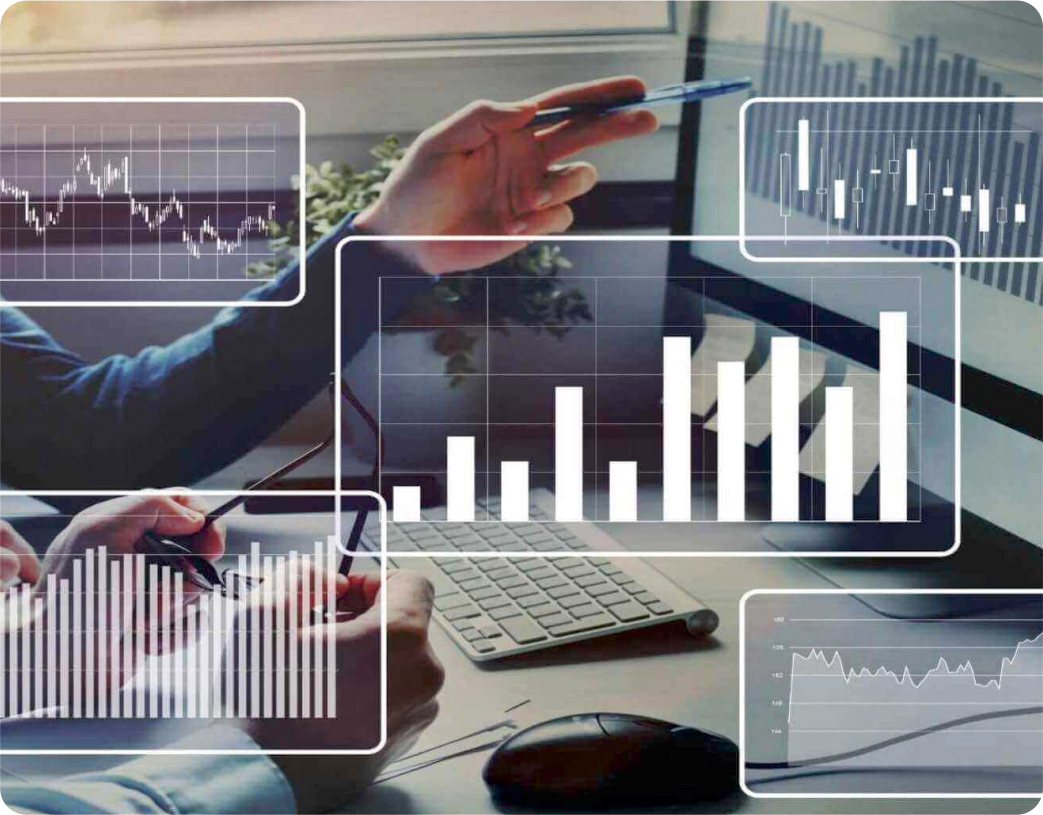- GF/ SF - Tejas, Opp Hotel Prasadalay, Shukrawar Peth, Pune - 411002
- +91 90 2132 2132
Different Methods of Demand Forecasting

Imagine this,
You are a business owner, eagerly anticipating the holiday season. You have stocked up on inventory, prepared your marketing campaigns, and are ready to meet the surge in demand. But what if your predictions are wrong? What if demand far exceeds your expectations, leading to stockouts and frustrated customers? Or worse, what if you overstock, leaving you with excess inventory and a significant financial burden?
These are the very real challenges businesses face when it comes to predicting future demand. In today's dynamic market, accurately forecasting customer needs is no longer a nice-to-have, it's a must-have. Whether you're a small startup or a multinational corporation, understanding the ebb and flow of customer needs is crucial for success.
Did you know accurate demand forecasts can help your business in many ways. For example, as reported by Intuendi.com, Intel, the leading and seller of microprocessors and chipsets, improved their customer satisfaction by 10% while Walmart increased their sales by 20% using optimizing their demand forecasts. But how do you effectively predict the unpredictable?
This blog will explore the various methods of demand forecasting, from simple moving averages to sophisticated machine learning algorithms. We'll delve into:
- The importance of accurate demand forecasting
- Different forecasting methods
- Choosing the right method for your business
By the end of this blog, you'll have a solid understanding of how to effectively forecast demand and gain a competitive edge in the ever-evolving marketplace.
The importance of accurate demand forecasting
Accurate demand forecasting can be a gamechanger for your business. There are multiple benefits of accurate demand forecasting. Some of the key benefits are listed below:
-
Making Decisions with Confidence
By accurately forecasting future demand, businesses gain the foresight to make data-driven decisions that optimize production, inventory, and pricing strategies. This empowers them to achieve superior business outcomes.
-
Eliminating Waste, Maximizing Efficiency:
Accurate anticipation of demand helps businesses in fine-tuning their supply chain operations, minimizing overproduction and excess inventory. This streamlined approach helps in reducing costs associated with production, storage, and logistics.
-
Delivering Exceptional Customer Experiences:
By optimizing operations, reducing costs, and enhancing customer satisfaction, businesses can significantly improve their bottom line and drive sustainable growth.
The 5 different methods of demand forecasting
-
Trend projection:
This is the most common demand forecasting method. As the name suggests, this method involves using your historical data to project your future sales. For example, to understand the demand in the month of July, you look at the sales figures in the month of July for the last 3 or 5 years.
Trend projection generally gives a good understanding of what to expect during a specific timeframe. However, it's always important to ensure you take into consideration historical anomalies and outlier events. For example, an event like Covid-19 pandemic may have affected your sales but it would be short-lived.
-
Market research:
This method involves studying the market through tools such as questionnaires and surveys. It takes time to obtain data from customers and to compile it. However, the insights are worth the effort.
Market research is a great way to know more about your customers. The insights from this method can help in planning and creating better strategies for business growth.
-
Sales force composite:
The sales team is in direct touch with the customers. Your sales team knows your customers the best. This method leverages the knowledge of your sales team to forecast customer demand.
In this method, the sales team sits together and discusses the insights received from customers and creates strategies.
-
The Delphi method:
The Delphi method gathers forecasts from a panel of experts through multiple rounds of questionnaires. After each round, experts receive anonymized summaries of others' responses, allowing them to revise their own. This iterative process aims to achieve a consensus forecast by leveraging the collective wisdom of the experts.
-
Econometric method:
The econometric method uses statistical techniques to model and forecast demand by analyzing relationships between historical sales data and relevant economic factors like income, competitor pricing, and consumer confidence.
It builds mathematical models that predict future demand based on how these economic factors influence sales.
How To Choose The Right Demand Forecast Method For Your Business
The different demand forecasting methods come with their own pros and cons. However, how do you select the best among them?
Selecting the right demand forecasting method involves a careful assessment of several factors. Begin by understanding your product's lifecycle stage and the stability of your market.
Once you have enough understanding of your product and the market, evaluate the availability, quality, and frequency of historical sales data. It is important to define your forecasting time horizon, considering short-, medium-, and long-term needs.
Analyze the complexity of demand patterns, including seasonality, trends, and cyclical variations. Determine the required accuracy and level of detail for your forecasts. Here you can consider the resources available with you.. You can think about the available budget and staff expertise.
Finally, match the forecasting method to your specific business objectives. Before arriving at a decision, you can experiment with different methods, monitor their performance, and continuously refine your approach to ensure accurate and reliable forecasts.
Please note that it may take some time for you to finalize the most appropriate method for forecasting demand. You may have to experiment a bit to arrive at the conclusion.
